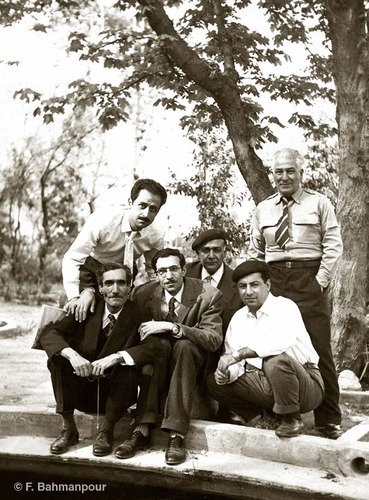Murtaza Mahjubi

Biography
Mahjubi, Murtaza (1900-1965)
Pianist, composer, and one of the most notable artists performing on the Gulha programs in the years 1956-1965. He is recognized as a very creative artist and a pianist with his own style in performing Persian classical music who besides performances on the piano, composed some of the most memorable melodic compositions in Persian classical music in the last one hundred years in Iran. Born into a middle class aristocratic family in Tehran, he was encouraged by his mother to study the piano with Mahmud Mufakhkham al-Mamalik (d. 1934) while studying at Alliance School. He studied repertoires with eminent masters like Husayn Khan Isma'ilzadeh, Husayn Hangafarin, and Hajikhan Zarbgir and also made use of Darvishkhan's and Husayn Tahirzadeh's mastery in Persian music. He performed at a concert in which he accompanied 'Arif Qazvini, the notable poet, tasnif writer, and vocalist of the time of Constitutional Revolution when he was ten years of age. He tutored the piano to aristocratic families in the Qajar and Pahlavi periods. He made quite a name for himeslef upon the recording of his earliest gramophone records as a soloist and also accompanist accompanied by Saba, Badi'zadeh, Neydavud brothers, Qamar, and Adib Khwansari. He was one of the earliest instrumentalists performing on Radio Tehran from its establishment and was recognized as one of the main and influential figures on the Golha programs from its earliest programs aired in 1956 to 1965. Like the majority of the masters of Persian classical music, he had also secluded himself owing to the unfavorable social circumstances following World War II. The Golha programs presented his elevated art to Iranian. He performed in the Gulha for a period of nine years and the recordings of his numerous brilliant performances on the Gulha-yi Javidan, Rangarang, Barg-i Sabz, and Yik Shakhih Gul bear witness to his excellent artistic genius. He performed on the piano on these programs as a soloist, was also at times accompanied by orchestras and at times by other instruments and avaz. His performances were inspired by the styles of tar, setar, and santur performances and also by making use of the technical potentialities of the piano thus extracting sounds which were unheard of and are still considered to be unprecedented in terms of taste and creativity. His compositions, including Karavan, Man az Ruz-i Azal, and Nava-yi Ney, were performed at times by unison orchestras and at times with skilful adjustments by Ruhullah Khaliqi accompanied by his favorite vocalists Ghulamhusayn Banan. Husayn Qavami. Rahi Mu'ayyiri and Navab Safa were his favorite lyricists. Later on, Marziyyeh and Puran were his favorite female vocalists performing his compositions. His performance style influenced Riza Varzandeh, Fazlullah Tavakkul, and even Hasan Kasa'i, but 'Ali Tajvidi was influenced more than others by his composition style. Standing second to Saba, he was the earliest artist for whose demise a special Golha program was made in his name. A collection of his works, titled Mashq-i Ustad, was released by his favorite student, Fakhri Malikpur (Andisheh, Tehran 2005). Mahjubi was one of the main pillars of the Golha in its golden age. His works include the gramophone record titled Pianu-yi Murtaza Mahjubi (Ahang-i Ruz, Tehran 1970).
Sayyid 'Alireza Mir'alinaqi